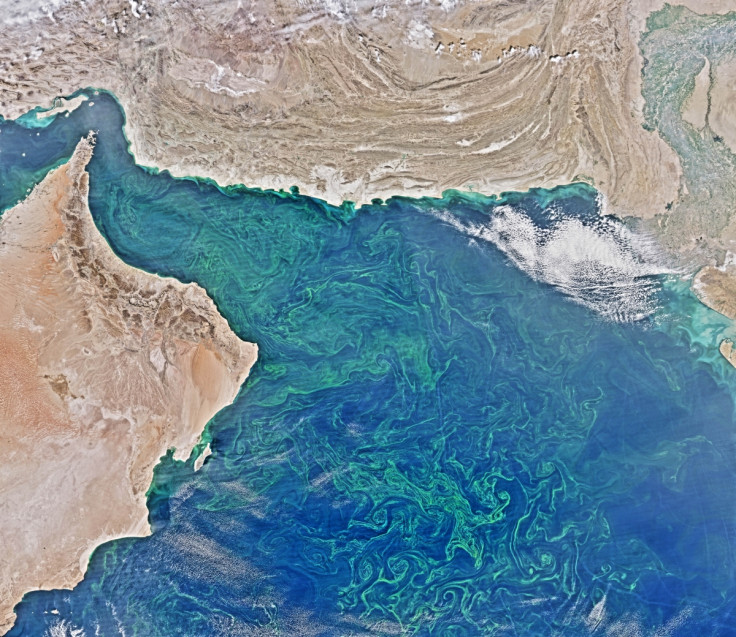Spectacular images show plankton blooms in the Arabian Sea from space
Plankton blooms have once again returned to the Arabian Sea, with a "spectacular" image showing them from space. The image, released by Nasa Earth Observatory, showed the phytoplankton blooms on 21 December 2015. The image of the bloom was composed with data from the red, green, and blue bands on the Visible Infrared Imaging Radiometer Suite. The image was then processed to highlight colour differences, bringing out subtle features of the bloom.

"Blooms show up this time of year in the Arabian Sea because of the winter monsoon," Nasa said. "Winds shift from south-westerly to north-easterly, stirring up currents that bring nutrients up from the depths and out from coastal tributaries. The change in wind direction also picks up dust from the arid lands of south-western Asia, carrying it out over the sea. This dust contains mineral nutrients that phytoplankton need to fuel their growth.
"Dust storms help fertilise the ocean. They move nitrate, phosphate, and iron from the land into ocean surface waters around the world."
Plankton blooms in the Arabian Sea have been changing over recent decades. Research from 2008 showed the composition of these communities had changed, with an increasing abundance of Noctiluca scintillans.

This species, also known as sea sparkle, have largely replaced prior populations and this is thought to be largely due to the oxygen-deficient water near the sea's surface. N. scintillans is better equipped to deal with these conditions.
What has caused this shift is not known, but research published in Nature Communications in 2014 said it could be to do with an influx of nutrient-rich sewage from Oman, India and Pakistan – and that these changes could be catastrophic to the fish living there. "These blooms are massive, appear year after year, and could be devastating to the Arabian Sea ecosystem over the long-term," said lead author, Helga do Rosario Gomes.
© Copyright IBTimes 2025. All rights reserved.






















